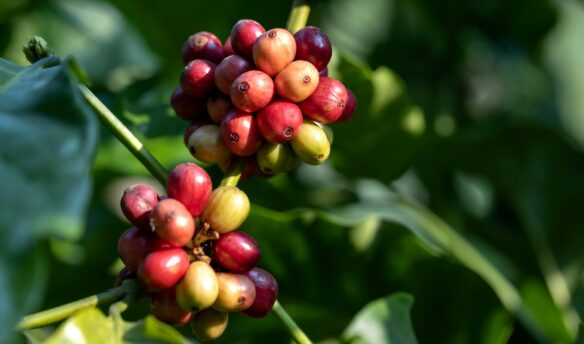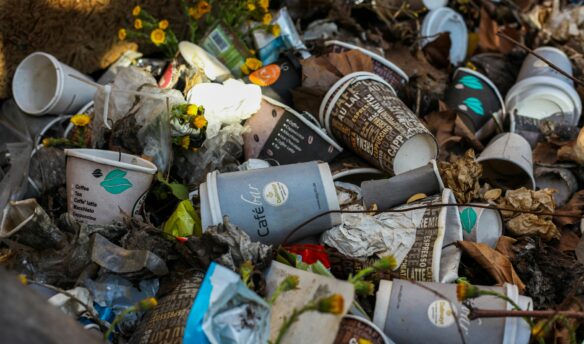Last month, President Donald Trump announced a sweeping set of tariffs on nearly all imported goods to the United States. Many publications (including this one) have talked about how tariffs could harm the coffee industry in the U.S., but what about tea?
Tariff threats have hit many industries hard, but they also pose a hazard to the global tea market, potentially redefining international trade dynamics and consumer access worldwide. Part of the tariff proposal included a differential tariff on individual countries, including a planned 24% tariff on imports from Japan and India and even higher tariffs on Chinese goods, some of the world’s largest tea exporters.
Since the U.S. doesn’t produce very much tea at a commercial scale, there’s no choice but to import. The U.S. is the second largest importer of tea globally.
The tea industry is already navigating rising costs from climate change, labor shortages, and shifting global demand. Adding tariffs could make it harder for small growers and specialty tea businesses to stay competitive, especially against large-scale commodity brands.
Tea Under Tariff Threat
“If these new tariffs are applied, they could increase costs anywhere from 7% to 25% depending on the category and country of origin,” says Amy Truong, founder of San Diego-based PARU Tea. Truong sources loose leaf tea from small independent farms around the world, creates original tea blends, mills fresh matcha and hosts private tea tastings at her La Jolla retail shop.
“For businesses like ours, which focus on high-quality, small-batch teas rather than mass-produced products, even small cost increases have a real impact, not only for us but for the farmers and partners we’ve built long-term relationships with,” she says. “It’s definitely something we’re concerned about, but we’ve always prioritized quality, transparency, and sustainability over cutting corners, and that commitment won’t change.”
Truong has already started reviewing her sourcing strategy and logistics to prepare. She estimates that logistics and import costs already account for about 15–20% of the total cost of her teas. If tariffs are introduced, it could easily push that even higher, so Truong is working on ways to absorb some of the increase by adjusting batch sizes, improving shipping efficiencies, and streamlining packaging.
“Price changes are always a last resort, but if it does happen, we’ll be transparent with our community about why,” she says. “Our goal is to balance fair pricing for customers while continuing to support the farmers and producers we work with.”
Rodrick Markus of Rare Tea Cellar has been importing tea and other rare ingredients from 90 countries for more than 20 years. He says he’s very concerned about the tariffs, especially between the U.S. and China.
“The proposed tariffs would not only increase our costs but could also disrupt the delicate supply chains that support small producers worldwide,” Markus says. “They also jeopardize the allocation of our rarest teas and ingredients, which we have carefully secured through strong relationships with the farms.”
No Tea At All
The worst-case scenario might not be that tea prices go up—but that there’s no tea at all.
Markus notes that cost-prohibitive prices could lead exporters to forgo selecting certain teas, limiting access to unique products. In the long term, tariffs could have a significant impact on the global tea industry, driving up costs at every stage from farm to cup and putting additional strain on small farmers who already operate with tight margins.
“We fear that it is possible that tea estates could be forced to switch to other agriculture or also possibly be sold off, forcing a reinvention of sourcing,” Markus says.
It’s hard to make plans for the future when the policies around tariffs continue changing, but Markus remains committed to transparency with his partners and customers. “The most challenging aspect of the tariffs is that neither we nor our international teams know whether they are temporary or a long-term issue,” he says. “This uncertainty has created a level of stress we have never experienced before.”
Nishchal Banskota, second-generation tea producer and founder of Nepal Tea Collective, agrees with Markus that uncertainty makes business difficult.
“In our business, pricing transparency and planning are key,” he says. “When we don’t know the final landed cost of our product until it reaches port, it throws off everything from inventory planning to pricing models to cash flow projections. It’s hard to build a resilient supply chain when you’re playing a guessing game with costs.”
As a wholesaler who sells tea to other companies, Banskota’s approach is to share the new tariff burden with wholesale clients and distributors. Banskota imports tea from Nepal, and is dealing with the 10% base tariff the current U.S. administration has set on all imports. Banskota has proposed splitting the cost with clients 50/50. He’s also introducing a separate line item labeled “tariffs” on invoices so that partners understand it’s not an arbitrary price hike but a direct result of policy changes.
“It also gives flexibility,” he says. “If tariffs drop or are lifted, that line can be removed. If they increase, it’s visible and traceable. This approach also protects long-term trust.”
Banskota worries that if tariffs continue or expand, we will see more consolidation, fewer small tea businesses and less innovation. “It risks shrinking diversity in the tea market and punishing sustainable, ethical producers who already operate on thin margins,” he says.”
Although the uncertainty is daunting, Truong remains steadfast. “These challenges are a reminder of why we started PARU in the first place: to connect people to teas with real stories and to support the growers behind them. No matter what changes, that mission stays the same, and that’s why it’s so important to support small and local businesses.”
















